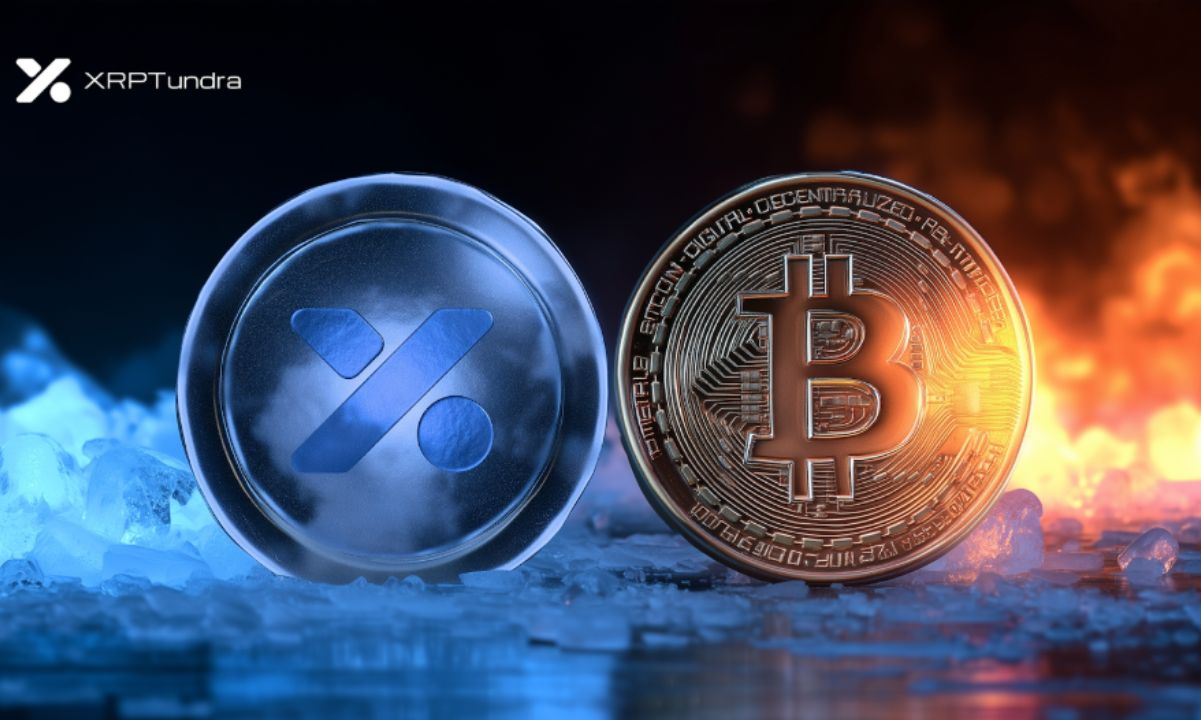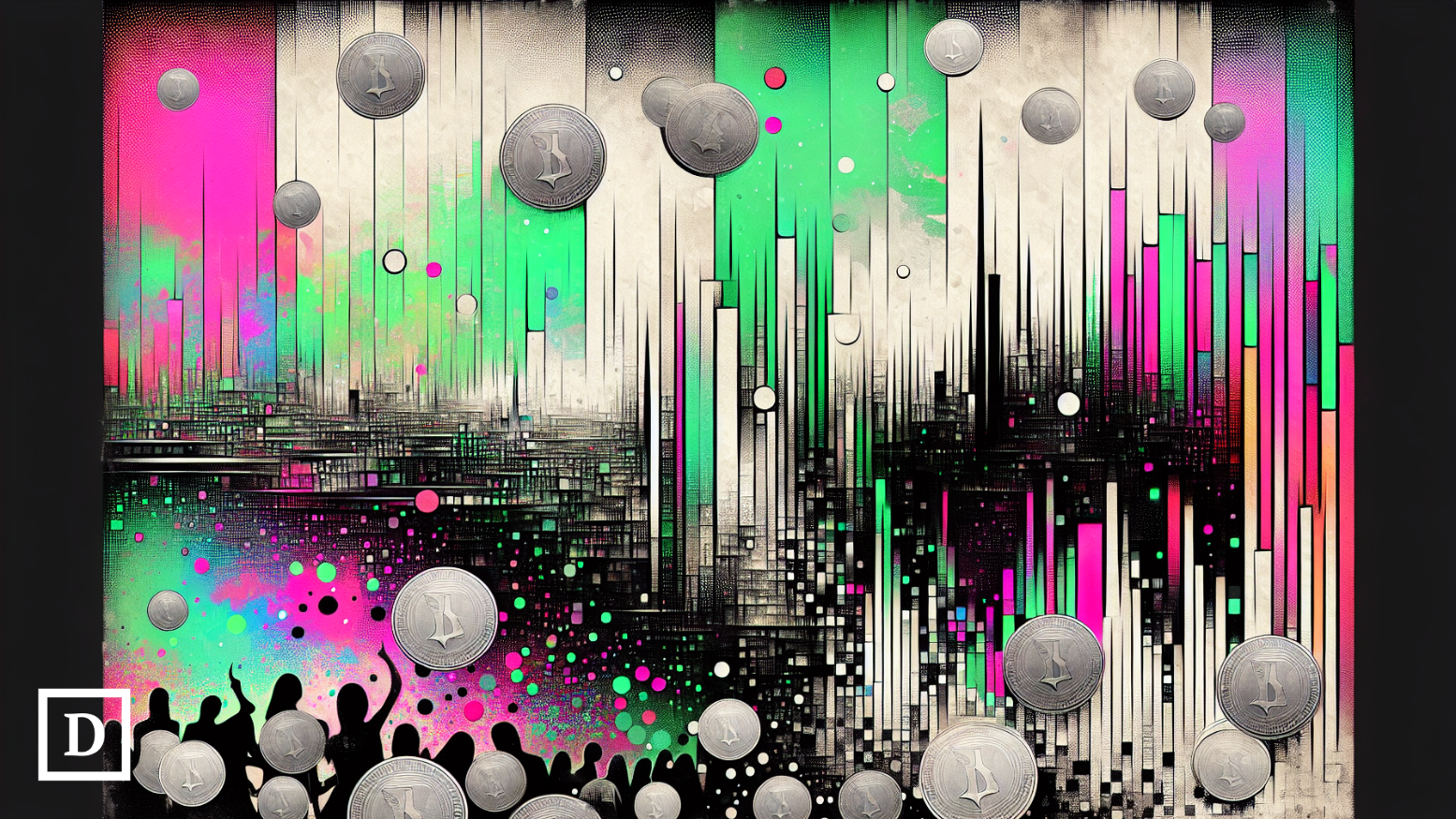HalvingLatest Mentions
Track Halving news, price action, and on-chain developments with Crypto Hunter's comprehensive coverage. Our curated feed brings together breaking headlines, technical analysis, protocol updates, and regulatory developments from trusted sources—so you can make informed decisions faster.
 Bitcoin Price Outlook vs XRP Tundra: Which Could Offer Better 2025 Returns?
Bitcoin Price Outlook vs XRP Tundra: Which Could Offer Better 2025 Returns?Bitcoin remains the benchmark of digital assets, and according to global asset manager VanEck, its evolution into “digital gold” is nearly complete. In an interview on The Paul Barron Show, Matthew Sigel, VanEck’s Head of Digital Assets Research, reaffirmed that the four-year Bitcoin cycle still defines the asset’s long-term rhythm. Each halving — a programmed 50% reduction in block rewards — strengthens Bitcoin’s scarcity narrative while reducing new supply. The firm pointed to Bitcoin’s capped supply of 21 million coins and its growing adoption by ETFs, corporations, and even sovereign holders. With roughly $196 billion in combined institutional and government exposure by mid-2025, VanEck described Bitcoin as an emerging macro-hedge against inflation and currency debasement. Its fixed issuance schedule, Sigel noted, makes it resistant to the same monetary dilution that erodes fiat purchasing power. As summarized in the VanEck interview, Bitcoin’s function has shifted from speculative instrument to policy-independent store of value — an outcome that validates the thesis but limits the explosive growth of earlier cycles. The Growth Curve Flattens for Late Bitcoin Entrants VanEck’s outlook reinforces Bitcoin’s strength but also its maturity. The firm highlighted that Bitcoin has outperformed every major asset class in eight of the past eleven years, delivering a 35,225% return over the last decade. Yet those gains belong mostly to early participants. Institutional ownership has replaced the retail speculation that once drove volatility. With ETFs absorbing liquidity and compliance frameworks tightening, Bitcoin’s price action increasingly resembles a macro asset rather than a frontier market. For long-term portfolios, that stability is attractive; for new investors, it means the likelihood of 100× gains has faded. As Bitcoin integrates further into traditional finance, its compounding curve naturally compresses. The very factors that now make it reliable — transparency, custody solutions, and regulation — also anchor its potential returns closer to those of other established stores of value. XRP Tundra Offers a Defined Return Model While Bitcoin matures, new blockchain ecosystems are building verifiable yield frameworks rather than speculative ones. XRP Tundra represents that new category: a dual-chain ecosystem spanning the XRP Ledger and Solana, structured around two native tokens. TUNDRA-S powers staking and utility on Solana; TUNDRA-X secures governance and reserves on XRPL. This design lets users participate in the network’s economics with measurable outcomes. Through audited Cryo Vaults, staking yields up to 20% APY will be available once vaults activate. Unlike exchange “Earn” programs, these rewards are governed by published smart-contract logic. In its ongoing Phase 9 presale, TUNDRA-S is priced at $0.147 with an 11% bonus, while buyers receive a free TUNDRA-X allocation valued at $0.0735. With confirmed listing prices of $2.50 and $1.25, respectively, participants can quantify their exposure before purchase. More than $2 million has already been raised, alongside $32,000 in Arctic Spinner rewards distributed to early participants. The difference is structural: Bitcoin’s value depends on macro demand; Tundra’s return is coded into its tokenomics and verified by auditors. Audits and KYC Replace Guesswork With Proof XRP Tundra operates under one of the most comprehensive verification frameworks in the current DeFi space. Cyberscope analyzed the project’s core contracts and reward logic, Solidproof reviewed its emission controls, and FreshCoins confirmed vault integrity and wallet ownership transparency. Complementing these audits, Vital Block completed full KYC verification of the development team. This four-layer validation gives XRP Tundra a security posture that rivals regulated financial instruments. Investors can access each report publicly, removing ambiguity about who operates the project and how its contracts function. In contrast, Bitcoin’s trust model relies on decentralized consensus, but not on human-level accountability — a philosophical strength, yet a limitation for those seeking direct operational assurance. Predictability Defines the Next Phase of Crypto Investing As 2026 approaches, the two assets illustrate the diverging paths of crypto. Bitcoin now behaves more and more like gold — valuable, secure, but fundamentally steady. XRP Tundra, still in its early stages, represents the measurable frontier: a fully audited ecosystem with transparent economics and quantifiable upside. For investors balancing long-term stability with near-term growth, the distinction is clear. Bitcoin anchors portfolios; audited projects like Tundra expand them. The next cycle may favor predictability over speculation — and in that environment, verifiable reward logic could prove as valuable as scarcity itself. Secure your Phase 9 allocation and follow verified updates as the listing approaches: Check Tundra Now: official XRP Tundra website How to Grab Tundra: step-by-step guide Security and Trust: Solidproof audit Join the Community: Telegram Disclaimer: The above article is sponsored content; it’s written by a third party. CryptoPotato doesn’t endorse or assume responsibility for the content, advertising, products, quality, accuracy, or other materials on this page. Nothing in it should be construed as financial advice. Readers are strongly advised to verify the information independently and carefully before engaging with any company or project mentioned and to do their own research. Investing in cryptocurrencies carries a risk of capital loss, and readers are also advised to consult a professional before making any decisions that may or may not be based on the above-sponsored content. Readers are also advised to read CryptoPotato’s full disclaimer. The post Bitcoin Price Outlook vs XRP Tundra: Which Could Offer Better 2025 Returns? appeared first on CryptoPotato.
 Bitcoin Risks Losing 80% of Its Value If Oldest Crypto Market Theory Comes True
Bitcoin Risks Losing 80% of Its Value If Oldest Crypto Market Theory Comes TrueBitcoin may seem established at $110,000, but if its historic four-year-cycle pattern repeats, the market could retrace up to 80% before the next halving rebound.
 NEAR Cuts Inflation Rate by Half Despite Failed Community Vote
NEAR Cuts Inflation Rate by Half Despite Failed Community VoteNEAR Protocol has upgraded its network with a new update that reduces its annual token inflation rate from 5% to roughly 2.5%, even though the initial governance vote on the proposed change failed to reach the required threshold.The NEAR Protocol team announced today, Oct. 30, that it had completed the upgrade. The so-called halving upgrade curbs token dilution caused by nearly 60 million new NEAR tokens minted annually due to minimal fee burns, while also realigning incentives for on-chain participation and lowering staking yields from roughly 9% to 4.5%, assuming half of the total supply remains staked.To continue reading this as well as other DeFi and Web3 news, visit us at thedefiant.io
 Bittensor Rallies Ahead of First TAO Halving
Bittensor Rallies Ahead of First TAO HalvingDecentralized AI network Bittensor is set to undergo its first halving event in December, and TAO is outperforming the rest of the altcoin market in anticipation.TAO’s tokenomics are modeled after Bitcoin’s, and as a result, the TAO token undergoes a halving event roughly every four years, depending on the mining rate. The network’s first halving is slated for December 10.Until 2024, BTC typically followed a pattern in which it would undergo a halving, block rewards would be cut in half, and the asset would then trend upwards to a new all-time high over the next year or two. 2024, however, marked the first time BTC reached a new all-time high before a halving, rather than after.To continue reading this as well as other DeFi and Web3 news, visit us at thedefiant.io
